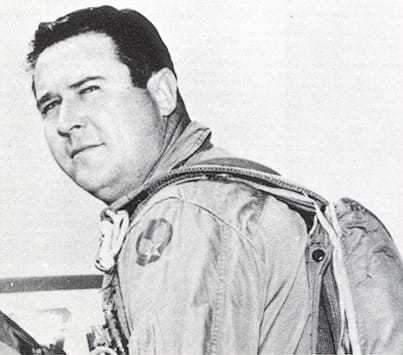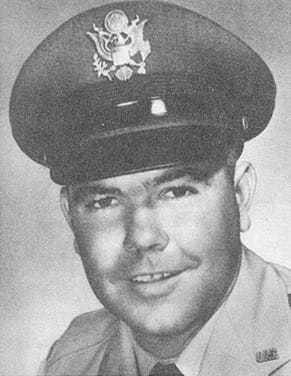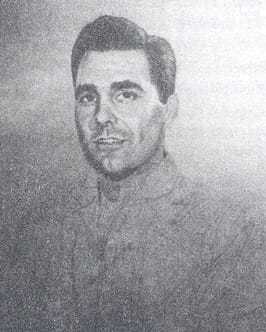Thomas Willard “Pete” Ray and Leo Francis Baker were killed by Cuban militiamen on April 19, 1961, after surviving the crash of their B-26 bomber on a beach near Cuba’s Bay of Pigs. Major Riley W. Shamburger and Wade C. Gray were killed on the same mission. Their B-26 bomber crashed into the ocean after being shot down by a Cuban Air Force T-33 fighter.
Background:
In January 1961, with tensions rising between the new US administration and Fidel Castro’s two-year-old, increasingly harsh, authoritarian regime, the United States severed diplomatic relations with Cuba.
Soon thereafter, the CIA asked Major General Reid Doster, then serving as commander of Alabama’s Air National Guard, to head up a new effort to recruit pilots, maintenance people, and aircraft armaments specialists with experience on the World War II-era B-26 medium-range bomber.
Recruits, apparently, were told that they would be participating in a secret mission aimed at toppling the Castro regime. General Doster enthusiastically accepted the assignment.

The Recruits:
Four of General Doster’s early recruits were Pete Ray, Leo Baker, Riley Shamburger, and Wade Gray.
Pete, a 30-year old pilot in the Alabama Air National Guard, was married with two children. His “day job” was technical inspector at Hayes Aircraft Corporation, which repaired and modified planes for the US Air Force in Birmingham, Alabama.

Leo, Pete’s co-pilot, was a native of Boston and a former flight engineer at Hayes Aircraft Corporation. At the time he was recruited, Leo was managing two pizza parlors in the Birmingham area.
Riley, a former Air Force Major, was an experienced pilot and instructor in the Alabama Air National Guard, and a test pilot for Hayes Aircraft Corporation. He was 36 years old, married, and the father of two children.
Wade, Riley’s co-pilot, was a former Air Force radio and electronics technician and a member of the Alabama National Guard. He also worked for Hayes Aircraft Corporation.
Although the men were told virtually nothing about the specifics of this dangerous mission, they signed on as contract employees with the Agency’s Directorate of Plans (now the Directorate of Operations) in February 1961. They were four of about 100 Alabama guardsmen who volunteered for what was certain to be a highly risky endeavor.
“Happy Valley” and the Mission:
After receiving a briefing on the operational plan in Washington, the four men were sent to Nicaragua, where they trained Cuban exile pilots and crewmembers to provide air cover for an invasion force. Living conditions at the Nicaraguan training site, “Happy Valley,” were characterized by some as “poor at best.” The heat and humidity were oppressive, even by Central American standards.
The exile force’s military operations against the Castro regime began in mid-April 1961 with aerial attacks on Cuban airfields. These initial sorties were followed by more such flights—all from “Happy Valley”—more than 700 miles away. The basic objective was to provide air cover and protection for the landing force, which was struggling to gain a beach foothold. Before long, the exiles’ tiny air combat unit had suffered substantial losses, as had their ground units. The morale and effectiveness of the surviving ground and air forces had been shattered by fierce resistance by Castro’s ground forces and, on the aerial front, numbing fatigue among the badly overworked anti-Castro pilots and air crews.
It soon became apparent to Pete, Leo, Riley, Wade and the other field advisors that continuation of the air action was beyond the exiles’ capabilities, and that the need for outside air support was critical. The success of the whole operation depended on gaining domination of the skies over Cuba, and this was not happening. Although President Kennedy decided not to provide US military air cover for the landing force, CIA program managers authorized the Alabama Air National Guard pilots to fly missions when the Cubans were no longer able to do so. The pilots were acutely aware of the danger they would face. It was in this context, seeking to help the Cuban people achieve freedom, they embarked on the flights that cost them their lives.
Their Final Mission:
On April 19, 1961, sometime after midnight, the four pilots—Pete Ray and his co-pilot Leo Baker, Riley Shamburger and his co-pilot Wade Gray—were flying their B-26s to the area known as Bahia de Cochinos – the Bay of Pigs – expecting to provide air support to the beleaguered anti-Castro ground troops.
At that point, the men on the beach were easy targets for Castro’s pilots. The mission of the anti-Castro air effort was to penetrate the beachhead area, attack Castro forces, and destroy whatever they could – especially trucks and tanks.
Pete and Leo’s aircraft was fired upon by at least one of the Cuban Air Force’s T-33 fighter aircraft; it may also have been hit by the extensive ground fire occurring in the area. Their B-26 went down in a ball of fire, crash-landing on the beach. Pete and Leo survived the crash and fled from the heavily damaged aircraft, but shortly thereafter they were killed by Cuban militiamen.

Riley and Wade’s B-26 was also hit as it approached the target area. When last glimpsed by another American B-26 pilot, it was at 100 feet above the beach, headed for the water at about 300 miles per hour. The plane hit the sea at a shallow angle. There were no survivors.
All four men were posthumously awarded the Agency’s highest honor for bravery – the Distinguished Intelligence Cross – and they received four of the original 31 stars on the CIA Memorial Wall when it was created in 1974.

